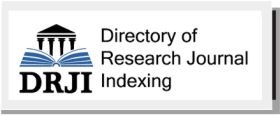Kebijakan Pemerintah Provinsi Jawa Timur dalam Penanganan Tindak Kekerasan pada Perempuan dan Anak
Abstract
This research aims to dig up information and analyze in more depth related to policies towards women and children with the realization of protection for victims of violence as a form of policy of the East Java Provincial Government. Forms of protection for victims are needed to fulfill victims' rights. Domestic Violence (KDRT) is a serious problem in the marriage sector in Indonesia, and domestic violence continues to increase from year to year. Most victims of domestic violence are women and children. To prevent and save victims of domestic violence, protection must be provided to them. The following research is a literature study using a qualitative approach. Based on survey results, domestic violence against women and children is caused by strong discrimination against women due to the strong patriarchal culture. Apart from that, education and poverty factors also play a role. Law enforcement against perpetrators of domestic violence is also weak. Protection for victims of domestic violence includes preventive efforts such as 24-hour temporary protection by the police and courts as well as placing victims in safe locations. Apart from that, there are curative measures carried out at certain stages. Also in the form of repressive protection, namely arresting and imprisoning the perpetrator so that the victim feels safe. An obstacle to protection from domestic violence is the tendency of victims to withdraw their complaints for emotional reasons or because they are worried about the burden on their lives in the future. Apart from that, it is difficult to collect evidence to detect incidents of violence in the household.
ABSTRAK
Penelitian ini bertujuan untuk menggali informasi dan menganalisis secara lebih mendalam terkait kebijakan terhadap perempuan dan anak dengan perwujudan perlindungan terhadap korban kekerasan sebagai bentuk kebijakan Pemerintah Provinsi Jawa Timur. Bentuk perlindungan terhadap korban sangat dibutuhkan untuk memenuhi hak-hak korban. Kekerasan Dalam Rumah Tangga (KDRT) merupakan masalah serius dalam bidang perkawinan di Indonesia, dan KDRT terus meningkat dari tahun ke tahun. Sebagian besar korban KDRT adalah perempuan dan anak-anak. Untuk mencegah dan menyelamatkan korban KDRT, perlindungan harus diberikan kepada mereka. Penelitian berikut ini merupakan studi literatur dengan menggunakan pendekatan kualitatif. Berdasarkan hasil survei, KDRT terhadap perempuan dan anak disebabkan oleh masih kuatnya diskriminasi terhadap perempuan akibat masih kuatnya budaya patriarki. Selain itu, faktor pendidikan dan kemiskinan juga turut berperan. Penegakan hukum terhadap pelaku KDRT juga masih lemah. Perlindungan terhadap korban KDRT meliputi upaya preventif seperti perlindungan sementara selama 24 jam oleh kepolisian dan pengadilan serta menempatkan korban di lokasi yang aman. Selain itu, ada upaya kuratif yang dilakukan pada tahap-tahap tertentu. Juga dalam bentuk perlindungan represif, yaitu menangkap dan memenjarakan pelaku agar korban merasa aman. Kendala perlindungan dari KDRT adalah kecenderungan korban menarik kembali pengaduannya karena alasan emosional atau karena khawatir akan membebani kehidupannya di masa depan. Selain itu, sulitnya mengumpulkan bukti-bukti untuk mendeteksi kejadian kekerasan dalam rumah tangga.
Keywords
Full Text:
PDFReferences
Chadwick, Bruce A, dkk. (1991). Metode Penelitian Ilmu Pengetahuan Sosial. Semarang: IKIP Semarang Press.
Creswell, J. W., & Creswell, J. D. (2018). Research Design: Qualitative, Quantitative, and Mixed Methods Approaches (5th ed.). Los Angeles: Sage Publication.
Dillon, G., Hussain, R., Loxton, D., & Rahman, S. (2013). Mental and Physical Health and Intimate Partner Violence against Women: A Review of the Literature. International Journal of Family Medicine, 2013, 1–15. https://doi.org/10.1155/2013/313909
Fayaz, I. (2019). Child Abuse: Effects and Preventive Measures. The International Journal if Indian Psychology, 7(2), 871–884. https://doi.org/10.25215/0702.105
Guedes, A., Bott, S., Garcia-Moreno, C., & Colombini, M. (2016). Bridging the gaps: a global review of intersections of violence against women and violence against children. Global Health Action, 9(1). https://doi.org/10.3402/gha.v9.31516
Irianto, J., Asmorowati, S., Setijaningrum, E., & Shavila, R. D. (2021). Digitalization of Violence Against Women Violence Governance Based on Stakeholders in East Java Province. Journal of Public Servise, 5(2).
Israpil, I. (2017). Budaya Patriarki dan Kekerasan Terhadap Perempuan (Sejarah dan Perkembangannya). Pusaka, 5(2), 141–150. https://doi.org/10.31969/pusaka.v5i2.176
Jatmiko, M. I. (2022). Belenggu Kuasa dan Krisis : Menakar Ulang Insiden Kekerasan Dalam Rumah Tangga di Masa Pandemi COVID-.
Jones, J. W., Hoogenboom, G., Porter, C. H., Boote, K. J., Batchelor, W. D., Hunt, L. A., … Ritchie, J. T. (2003). The DSSAT cropping system model. In European Journal of Agronomy (Vol. 18). https://doi.org/10.1016/S1161-0301(02)00107-7
Kareen N. Tonsing and Jenny C. Tonsing. (2019). Exploring South Asian Women’s Experiences of Domestic Violence and Help-Seeking Within the Sociocultural Context in Hong Kong. SAGE Publication, 25(12), 1417–1432. https://doi.org/https://doi.org/10.1177/1077801218821443
Mambela, F., Shilvirichiyanti, S., & Aprinelita, A. (2022). Penegakan Hukum Tindak Pidana Kekerasan Dalam Rumah Tangga Diwilayah Hukum Kepolisian Sektor Kuantan Tengah Kabupaten Kuantan Singingi. AL-MANHAJ: Jurnal Hukum dan Pranata Sosial Islam, 4(2), 691–698. https://doi.org/10.37680/almanhaj.v4i2.1991
Miles, M. B., Huberman, A. M., & Saldana, J. (2014). Qualitative Data Analysis : A Method Source Book. In SAGE Publication (Third Edit). SAGE Publications, Inc.
Mootz, J. J., Taylor, L., Wainberg, M. L., & Khoshnood, K. (2019). Ethical considerations for disseminating research findings on gender-based violence, armed conflict, and mental health: A case study from rural Uganda. Health and Human Rights, 21(1), 81–92.
Nada Naurah. (2023). Menilik Statistik Kekerasan Terhadap Perempuan Pada Tahun 2022. Diambil dari https://goodstats.id/article/menilik-statistik-kekerasan-terhadap-perempuan-pada-tahun-2022-0MS0Y
Ningsih, F. S. A., Hudaniah, H., & Rokhmah, S. N. (2023). Pengaruh body shaming terhadap body image remaja perempuan. Cognicia, 11(1), 79–85. https://doi.org/10.22219/cognicia.v11i1.24983
Nova, F. A., & Prathama, A. (2023). Peran UPTD Perlindungan Perempuan dan Anak dalam Penanganan Tindak Kekerasan Anak di Kota Surabaya. Jurnal Ilmu Pemerintahan, 5(1), 231–243.
Puri, M., Tamang, J., & Shah, I. (2011). Suffering in silence: Consequences of sexual violence within marriage among young women in Nepal. BMC Public Health, 11(1), 29. https://doi.org/10.1186/1471-2458-11-29
Rodiyah, I., & Irianto, J. (2024). Stakeholder-based governance for managing victims of violence against women and children in East Java Tata kelola berbasis stakeholder dalam penanganan korban kekerasan terhadap perempuan dan anak di Jawa Timur. 60–73.
Sembiring, H., & Saleh, M. (2019). Efektivitas Penegakan Hukum terhadap Kekerasan Dalam Rumah Tangga. Jurnal Mimbar Hukum, 3(23), 46–58. Diambil dari http://www.jim.unsyiah.ac.id/kenegaraan/article/view/14891%0Ahttp://www.jim.unsyiah.ac.id/kenegaraan/article/download/14891/6325
Sugiyono. (2018). Buku Metode Penelitian. Metode Penelitian, hal. 32–41.
Suswandari, S., Hanita, M., Aprian, M., & Susanti, E. N. (2022). Kebijakan Penanganan Tindak Kekerasan pada Perempuan dan Anak selama Masa Pandemi Covid-19 di Jakarta. Jurnal Ilmu Sosial dan Humaniora, 11(1), 161–175. https://doi.org/10.23887/jish.v11i1.39511
Taft, A. J., Powell, R. L., & Watson, L. F. (2015). The impact of violence against women on reproductive health and child mortality in Timor-Leste. Australian and New Zealand Journal of Public Health, 39(2), 177–181. https://doi.org/10.1111/1753-6405.12339
TB, J., Rasyimah, & Mahsa, M. (2023). Ketidakadilan Gender Pada Tokoh Perempuan Dalam NovelSengketa Rasa Karya Penabila: Tinjauan Feminisme. Jurnal Ilmiah Pendidikan Bahasa dan Sastra Indonesia, 73–85.
Umniyyah, Z. (2021). Kekerasan Berbasis Gender : Belenggu Patriarki Terhadap Perempuan Dalam Novel Tempurung Karya Oka Rusmini. Journal of Feminism and Gender Studies, 1(1), 22. https://doi.org/10.19184/fgs.v1i1.22323
Wantu, F. M., & Sarson, M. T. Z. (2020). Legal Protection of Women as Victim of Domestic Violence. Indonesian Journal of Advocacy and Legal Services, 1(2), 243–258. https://doi.org/10.15294/ijals.v1i2.36093
Wicaksono, A., & Wicaksono, A. (2022). Grindle Policy Implementation Theory in Analysis of Forestry Conflict In Pelalawan District, Riau Province. Jurnal Kajian Pemerintah: Journal of Government, Social and Politics, 7(2), 31–44. https://doi.org/10.25299/jkp.2021.vol7(2).9493
Yang, X., Wu, L., & Zhang, Y. (2022). A New Parallel Difference Method for Solving Time Fractional Black-Scholes Model. Journal of Mathematical Finance, 12(04), 683–701. https://doi.org/10.4236/jmf.2022.124036
DOI: https://doi.org/10.31334/transparansi.v7i1.3653
Copyright (c) 2024 Transparansi : Jurnal Ilmiah Ilmu Administrasi

This work is licensed under a Creative Commons Attribution-ShareAlike 4.0 International License.
View My Stats
Transparansi : Jurnal Ilmiah Ilmu Administrasi
Email :[email protected]
Website:https://ojs.stiami.ac.id/index.php/transparansi
LISTED & INDEXED :
























